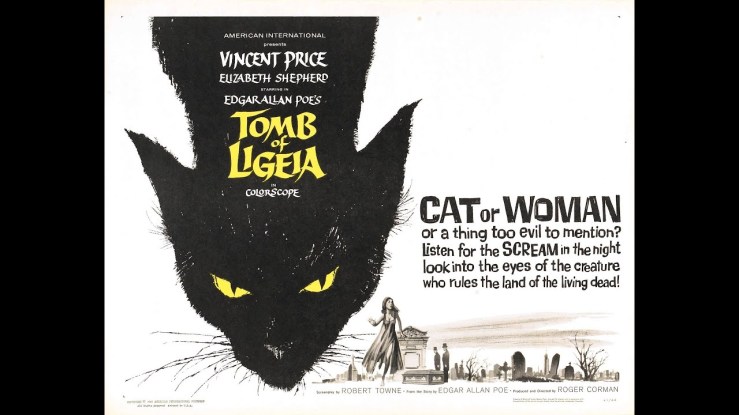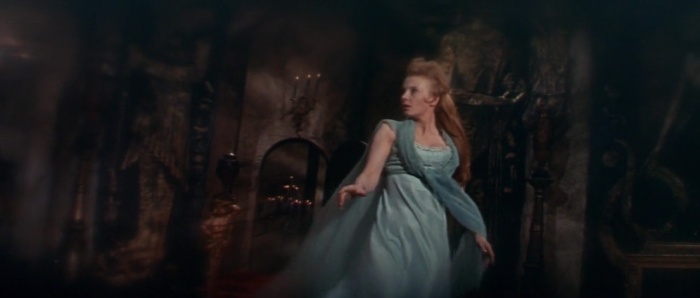by Paul Batters

“Man need not kneel before the angels, nor lie in death forever, but for the weakness of his feeble will.”
Vincent Price holds a warm place in the heart of many classic film fans. Whilst appearing in many films outside the horror genre in a variety of roles, Price is understandably associated with horror films. Without a doubt, Price had one of the most distinguishable voices and an incredible presence on the screen which could never go unnoticed.
My earliest memory of Vincent Price is of his appearance in the last of the Roger Corman films drawn from the tales of Edgar Allan, The Tomb Of Ligeia (1964). Incredibly, my parents allowed me to stay up with them when it was screened on television in the 1970s. At the time, naturally, I failed to grasp the deeper nuances of the film and was more taken by the looming presence of Price when he first appears on the screen. It felt scary at the time but I also recall being a little bored with it too, perhaps in great part because I could not comprehend all that was going on.
Now reviewing the film well over 40 years later, The Tomb Of Ligeia fares better with a more educated understanding of the film. Yet something still seems amiss.
The film opens ominously with a funeral, where Verden Fell (Vincent Price) is placing his apparently dead wide Ligeia in her tomb, amongst the ruins of an abbey. However, she will not be interred in peace as the local religious authorities pour scorn on the burial, claiming that her blasphemies and atheism do not afford her a Christian burial. Fell returns their scorn despite their curses on her but the sudden screeching appearance of a black cat on the coffin seems like an ominous moment, particularly when the eyes of Ligeia flick open. It is a very effective scene, as we are led into the titles and Price is as dominant a figure as ever, in his disdain and spite for those around him.



Verden Fell appears to be a man haunted by his dead wife and his dark clothes and even darker demeanour suggest he is still in mourning. However, a chance meeting with the fair and lovely Rowena (Elizabeth Shepherd) during a hunting accident will lead to more, as she becomes drawn to him. Likewise, he eventually opens to her and after falling in love, the two marry. For a moment, the morbidity seems to dissipate but for the audience the ever-haunting words from the long-dead but enigmatic Ligeia herself whisper in the background – that she would be Verden’s wife forever. Indeed, even when they return to his home after the marriage, Verden’s happy outlook seems to return to the former haunted morbidity that enveloped him. Is Ligeia’s presence about to announce itself?



Sure enough, their marriage is soon visited upon by the spirit of Ligeia, particularly in the form of the black cat. A number of times it even attacks Rowena, who also has strange dreams and appears even possessed at times.
The mystery builds as to Ligeia and Rowena’s former beau and fiancé Christopher Gough (John Westbrook) seems determined to discover the truth. The ending, far removed from the original story but very fitting for a Corman film, will see all revealed – Rowena’s horror is all apparent and Verden appears as a broken man given in to the madness which has closed his grip on him almost completely. The audience is left with the supporting cast to explain everything. But of course, the ending will be far more colourful than that. By the way, see if you can pick up some of the stock footage used in the grand finality. If you are familiar with Corman’s approach and his other Poe films, you won’t have to look too hard.

As with a number of the Corman films, The Tomb Of Ligeia is loosely based on the Poe short story and the very nature of the story meant that screenwriter Robert Towne had to flesh out the story further for a full film production. As a result, there are some other familiar symbols employed, specifically the ‘black cat’ (which feels like more of an annoyance than an object of terror, and could be easily dispatched with by a swift kick).
The film was shot on location in England with exceptional use of the countryside and the ruined abbey. This is perhaps one of the strongest aspects of the film and as Nate Yapp on classic-horror.com points out, releases “Ligeia from the stagy, claustrophobic studio sets that marked the rest of the series”. The subtle use of Dutch angles, colour and beautiful camera work achieves a spooky atmosphere with solid Gothic overtones. with the ruined abbey again beautifully used.

Corman does build a suspenseful film with the help of Townes’ script but the tension loses its’ way during the second act and the atmosphere needs to be built up again (with a little too much help from the Ligeia-possessed cat and some inexplicable dreams that look parachuted in to help the re-building process. Some of the moments are effective, such as the broken mirror which reveals a doorway and the awful discovery at the tomb itself. However, the film seems to fall into cliché and the usual methods are employed to serve the audience with a climactic ending. Contrary to what some critics have suggested, there are plenty of Gothic elements still employed to hook the audience in – thunder and lightning, tombs, graves, haunted mansions, ruined abbeys and a dark past. Not to mention hints at necrophilia and insanity.
Corman would go on to say that he thought The Tomb Of Ligeia was one of his best Poe films. It is beautifully shot and the supporting cast do well. However, with all due respect to a man I greatly admire, I am not sure if audiences would agree. For a film clocking in at 81 minutes, it feels like double that in time. It is also certainly atmospheric with some frightful moments but not ones which will leave the audience reeling in horror. It looks polished but the veneer cannot hide that the film fails to click.
Price is certainly miscast in the role of Verdun Fell, with a younger actor more befitting in the part of the tragic and haunted figure. According to the April 2, 2008 issue of Cinemafantastique, Corman, whilst a huge fan of Price, did not want him in the role but he was at the mercy of AIP’s money. Corman apparently wanted Richard Chamberlain, a far younger and incredibly handsome actor with both characteristics serving the tragedy of the character of Verden Fell even better and making Rowena’s fascination more believable.

But Price is formidable in the role. He plays the tragedy of Fell to a fault, alternating from the tall-standing, supercilious husband burying his dead wife to the morose man struggling with his existence. The dark glasses are an interesting touch (for 1821!) and he is superb at channelling his pain right up to the finale, which whilst a little silly is still campy and fun.
The Tomb Of Ligeia probably also reveals that the Corman formula had run its’ course. Of all the Corman films based on Poe, this film would make the least at the box office. It may well be the weakest of the eight Poe films by Corman but it is not by any means a non-enjoyable film. It’s still fun to watch and of course the main reason for that is the irrepressible Vincent Price.
A link to the full movie is below:
This article is an entry into the Vincent Price Blogathon kindly hosted by Realweegiemidget. Please don’t forget to click on the link to support this great blogathon and read some fantastic entries from some wonderful writers.
Paul Batters teaches secondary school History in the Illawarra region and also lectures at the University Of Wollongong. In a previous life, he was involved in community radio and independent publications. Looking to a career in writing, Paul also has a passion for film history.
A very well-thought out review. Price is such a formidable presence that it is hard to separate him from the film. I think viewers, myself included, are much more forgiving of films in which he left a mark. I enjoy Tomb of Ligeia quite a bit but it does lag in parts and seem a little to similar to the other Corman/Poe/Price films.
LikeLiked by 1 person
Thank you so much and forgive my tardy response. Price is certainly what allows the film to still have some standing and would otherwise perhaps even be a forgotten film. It’s enjoyable and far from being a huge disappointment but as I discussed it’s not the strongest Corman film.
LikeLiked by 1 person
I agree. There are many excellent components to the movie, but it lacks cohesiveness and a certain energy to bring it all together. Nonetheless, completists will not be disappointed.
LikeLiked by 1 person
Hi Patricia and thanks for your comment. I enjoy the film but yes, it doesn’t have the energy to draw it together and feels forced at times. You can almost pick where the forced moments are and as a result it’s not effective and feels formulaic. Having said that Price is still a heck of a presence.
LikeLike
It may be presumptuous of me to disagree with Roger Corman, but I always thought Tomb of Ligeia was one of the weaker films in the Poe Cycle. It is certainly a beautiful film. It is very well shot. The problem is, as you point out, it does fall into cliché. By this point I have always thought that AIP’s Poe films had developed a bit of a formula, and unfortunately Tomb of Ligeia plays according to that formula all too often. That having been said, Vincent Price is impressive and it certainly has enough Gothic trappings to be quite enjoyable, particularly for Vincent Price fans.
LikeLiked by 1 person
I agree that it’s a beautifully shot film and yes certainly the weakest of the Corman films. The Gothic element loses its impact with the overuse of the well-worn formula. No wonder this was the last of the cycle – they knew that they had worn it out.
LikeLike
What a wonderful review of an underrated movie! Yes, “the weakest of the eight Poe films by Corman” but fun nevertheless! 🙂
LikeLiked by 1 person
Thanks so much Eric. I do love the film even if it’s not the strongest of the Poe films. Lots of fun though!
LikeLiked by 1 person